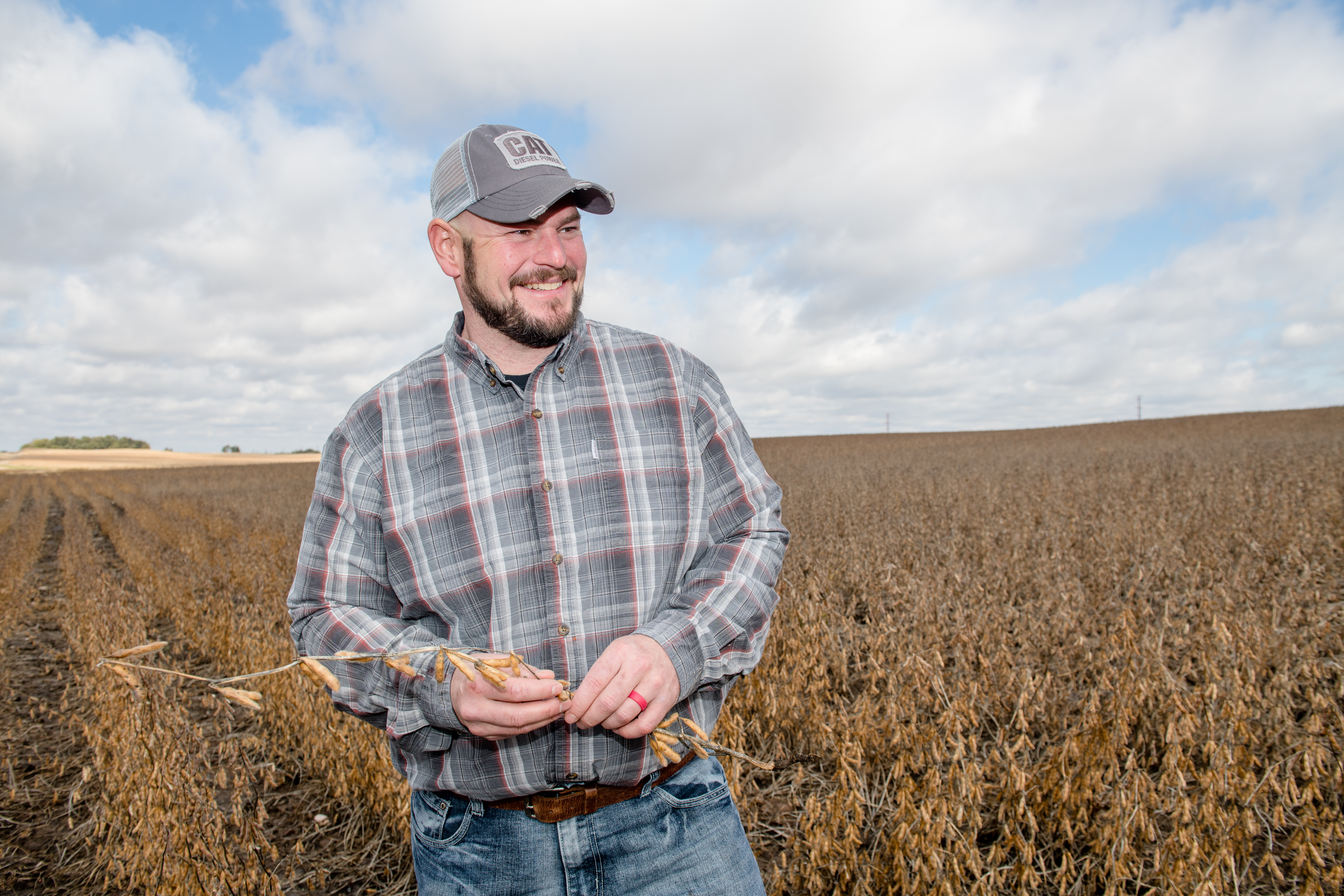
ISA District 2 Director Casey Schlichting says he'll stick to a normal crop rotation this year. The recent prospective plantings report from the USDA pegs U.S. soybean production 5% higher from 2020.
U.S. soybean acreage forecast 5% higher in 2021
April 1, 2021 | Bethany Baratta
U.S. soybean farmers are expected to plant 87.6 million acres this year, according to the U.S. Department of Agriculture’s (USDA) National Agricultural Statistics Service (NASS).
Though prospective soybean plantings are up 5% from last year, the USDA’s 87.6-million-acre forecast is below the estimated 90 million acres forecast at the USDA’s Outlook Forum.
The prospective plantings report, issued March 31, also pegs Iowa soybean production higher at 9.8 million acres, up 400,000 acres from 2020.
May soybean futures finished limit higher (70 cents) on Wednesday at $14.36½ per bushel. July soybeans were also up 70 cents at $14.27½. New crop November soybean futures closed the day 70 cents higher at $12.56¾ per bushel.
Projected corn acreage
U.S. corn acreage is estimate at 91.1 million acres, up less than 1% from the 2020 crop. The estimate is below the 92 million acres forecast during the USDA’s Outlook Forum.
Iowa farmers intend to plant 13.2 million acres of corn for all purposes in 2021 according to the USDA’s NASS. This is down 400,000 acres from 2020.
May corn futures ended Wednesday limit higher (25 cents) at $5.64½ per bushel on the CME Group. July corn futures were limit higher at $5.47½ per bushel. New crop December corn futures closed March 31 limit higher at $4.77½.
Grower intentions
Iowa soybean growers say they’re largely planning to follow their crop rotation this season.
Here’s what they said:
Pat Swanson, Iowa Soybean Association (ISA) District 9 Director from Ottumwa: “We’re sticking to our normal rotation. Last year we grew more soybeans, this means this year we’ll have more acres of corn.” The Swansons grow cover crops on corn acres slated to be planted to soybeans. They’ll be drilling soybeans into cover crops during planting this year. Farmers in her area say they’re following their normal rotation this year, she said.
Rick Juchems, ISA District 3 Director from Plainfield: Planting intentions are split 50/50 soybeans and corn this year. “Our crops turned out pretty good last year. Corn was dried down by the time it was ready to harvest, which saved a lot on liquid propane compared to the year before.” Fieldwork has begun in the area as the planting window approaches.
Casey Schlichting, ISA District 2 Director from Clear Lake: After seeing deficient nitrogen uptake in corn-on-corn acres last year, Schlichting says he’ll be planting a few more acres to soybeans. “It’ll be pretty much business as normal this year; we’re on a pretty strict 50/50 rotation,” Schlichting says. “Corn and soybeans look to be profitable this year, especially after Wednesday’s board rally.”
Jeff Jorgenson, ISA president from Sidney: After fields were flooded in 2019, acres favored soybeans on Jorgenson’s farm in 2020. This year, he’ll be planting more acres to corn.
“My planting decision has nothing to do with what’s happening in the market, it’s just the way the rotation worked out for us,” Jorgenson says.
He says larger soybean crops bodes well for strengthening domestic and international demand.
“We need to raise a good crop in the U.S. to get supplies built back up so we can maintain and grow our markets,” Jorgenson said.
The overall crop production, he notes, depends largely on the weather. “I’d rather start with having a good crop than having an exceptional crop ruined by the weather; a short crop is not good for anybody.”
He expects to start planting mid-April.
Back